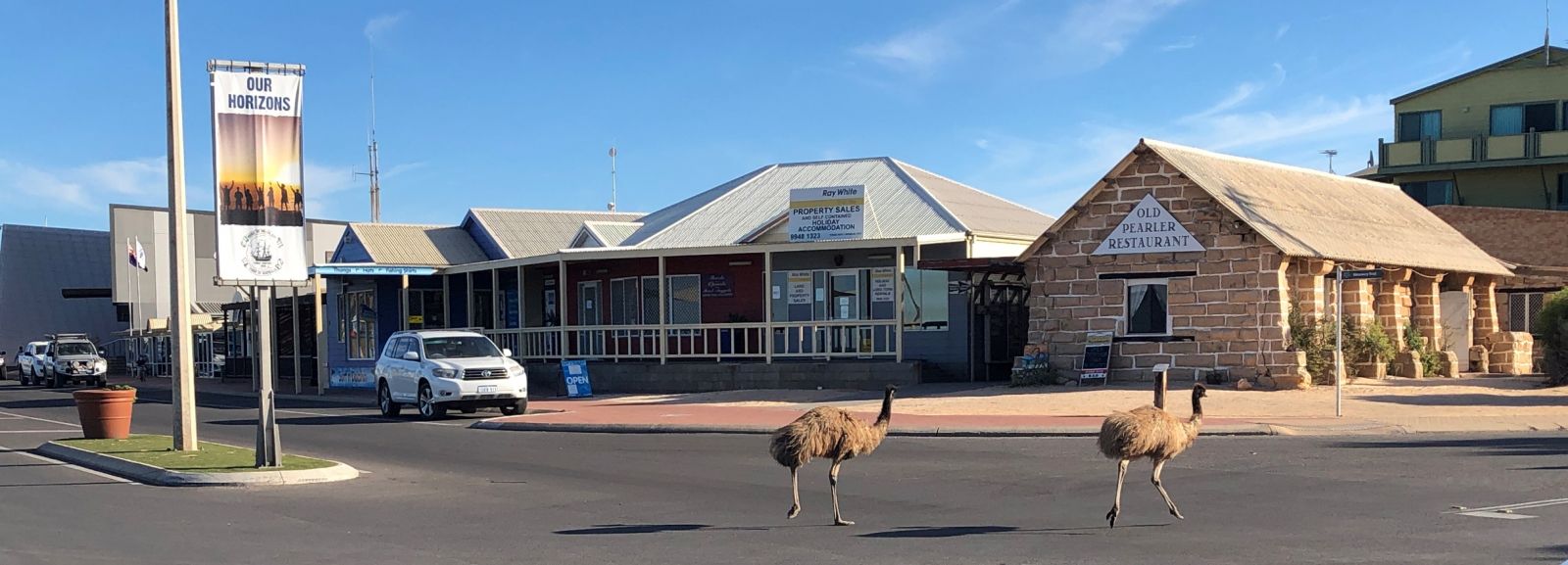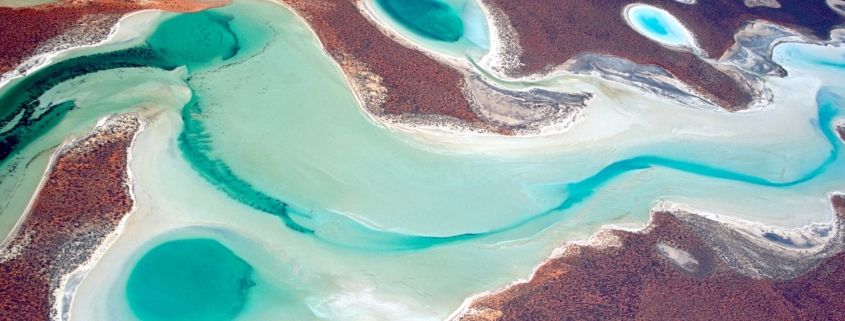New Assessment Lists Shark Bay at High Risk from Climate Change
An innovative new assessment process has confirmed the iconic Shark Bay World Heritage property in Western Australia is highly vulnerable to the impacts of climate change.
The assessment indicates that the 23,000-square-kilometre Shark Bay property, on the westernmost point of the Australian continent, is at great risk to potential impacts of three key climate stressors – air temperature change, storm intensity and frequency, and extreme marine heat events – by 2050, with a low capacity for the system to adapt to climate change.
Associate Professor Scott Heron and Jon Day from James Cook University developed the Climate Vulnerability Index (CVI) assessment process to identify the environmental and socioeconomic vulnerability of World Heritage properties. The assessment process builds on a widely accepted framework developed by the United Nations Intergovernmental Panel on Climate Change.
The Shark Bay World Heritage Advisory Committee took the opportunity to pilot the assessment process to fast track an environmental risk assessment on the property. The results will contribute to a Science Plan for the region being developed by the Western Australian Marine Science Institution (WAMSI).
“This assessment will form part of our review of the existing knowledge about Shark Bay and will help us to prioritise research in a comprehensive Science Plan,” Dr Shaw said.
The assessment also considered the economic dependence of key business types on the property, the local population’s connection with the property, and the levels of adaptive capacity.
“The CVI process showed the effects of climate change will have a high degree of impact on the Shark Bay community both socially and economically,” Dr Heron said.
“Around 100,000 tourists visit the Site each year to interact with turtles, dugongs and dolphins, and visit the world’s most extensive population of stromatolites which are representative of organisms that date back billions of years,” Chair of the Shark Bay World Heritage Advisory Committee Phil Scott said. “Commercial and recreational fishing is also extremely important for the local and state economy, so this assessment helps us to better understand just how vulnerable Shark Bay is.”

Above: Stromatolites, Shark Bay
Shark Bay, known by the Malgana Traditional Owners as Gatharragudu (two bays), is one of the nation’s 19 unique properties inscribed on the World Heritage List, along with iconic landmarks such as Uluru-Kata Tjuta, Kakadu, and the Great Barrier Reef. It is one of only four marine sites in the world that meets all four natural criteria for World Heritage listing.
Local experts and representatives from the community, management agencies and academic institutions contributed to two workshops through the CVI process (Denham, September 2018 and Perth, June 2019). The final report has been produced by the Shark Bay World Heritage Advisory Committee and WAMSI.
The CVI has now been applied and tested in other World Heritage properties including a cultural site in the Orkney Islands, Scotland and the Wadden Sea, a tri-national property (Germany, Netherlands and Denmark).
The Shark Bay CVI report is available at www.wamsi.org.au/cvi-shark-bay


